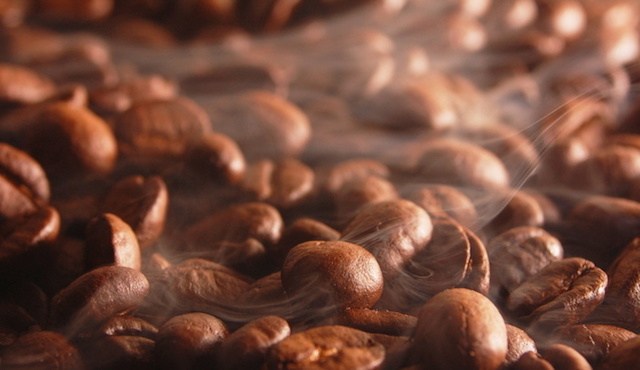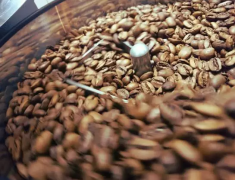[coffee roasting] firepower throttle (6) | Coffee workshop

[coffee roasting] Fire throttle control of roaster (1) | Coffee workshop
[coffee roasting] Fire throttle control of roaster (2) | Coffee workshop
[coffee roasting] Fire throttle control of roaster (3) | Coffee workshop
[coffee roasting] Fire throttle control of roaster (4) | Coffee workshop
[coffee roasting] firepower throttle (5) explosive development stage (1) | Coffee workshop
[coffee roasting] firepower throttle (5) explosive development stage (part two) | Coffee workshop
For professional baristas, please follow the coffee workshop (Wechat official account cafe_style)
After knowing the effect of adjusting firepower and throttle on each stage of baking, it is necessary to understand the characteristics of beans, such as planting altitude, density, variety and water content, before baking. Then make a baking plan according to the degree of baking or coffee flavor you want to achieve, determine the point and size of adjusting firepower and throttle in advance, and estimate the baking curve you want to achieve this time.
The baking curve mainly records the temperature rise per minute in the baking process, the time of adjusting the parameters of the firepower throttle, or the temperature and key points (return temperature point, dehydration point, a burst point, etc.).
When making the baking plan, we should not only consider the impact of different firepower throttle parameters and temperature rise on different stages of baking, but also consider the firepower throttle adjustment of the whole baking process, so that each stage can achieve the expected situation.
In the baking process, when entering the pot, the heat transfer capacity of raw beans is better because of the high water content of raw beans, which is the most resistant to heating in the whole baking process. Therefore, beans that have just entered the pot can be dehydrated with greater firepower, and if they are extremely hard beans at high altitude, they can be dehydrated directly by high fire. Provide sufficient heat and temperature rise for boilers and beans at the beginning of baking. The throttle does not have to be opened too wide, because there is not much that needs to be discharged through the throttle at first, and too much throttle will take away the heat too quickly.
With the progress of baking, the silver skin on the surface of coffee beans will begin to fall off, and when the bean temperature reaches about 150 degrees, dehydration is completed, and chemical reactions that have an important impact on the flavor of coffee begin to take place. The silver skin in the furnace can be removed, otherwise as the temperature in the furnace gets higher and higher, the silver skin will be charred into carbonized particles to contaminate the coffee beans.
At this time, the firepower should be slightly reduced, while there is enough heat to maintain the chemical reaction, it can also extend the chemical reaction time as long as possible before the explosion begins, so that the reaction can be carried out more fully.
When the baking process is about to start with an explosion, the beans will begin to release heat and release a large amount of waste smoke, so the throttle should be opened or even fully opened in an explosion, and the firepower should be adjusted to a large extent so that the waste smoke can be discharged quickly. and control the temperature rise after the explosion, so that the explosion can be carried out fully and completely.
A complete explosion should have an early stage of sporadic sound at the beginning, a dense stage with very dense sound and a loud sound, and finally a tail stage that gradually returns to calm. Too fast into a dense explosion means that the firepower is too large, it is easy to make the beans scorched outside, bitter and raw. Almost no sound or no explosion at all means that the firepower is too small, which will make the beans insipid.
Important Notice :
前街咖啡 FrontStreet Coffee has moved to new addredd:
FrontStreet Coffee Address: 315,Donghua East Road,GuangZhou
Tel:020 38364473
- Prev

[baking] Columbia Bake sharing (7) | Coffee workshop
The exchange of professional baristas please follow the coffee workshop (Wechat official account cafe_style) to think about beans that have never been roasted in medium or deep depth before, mainly because I prefer the regional flavor under shallow roasting. Then share a moderately deep American bean this time. The beans are washed Kaddura from santa rita Manor in Colombia. What I like better about this bean
- Next

America's top baristas teach you how to make a perfect cup of coffee!
Professional baristas please follow the coffee workshop (Wechat official account cafe_style) for Lyme Butler, coffee is not just coffee, a small cup of Italian concentrate can unite the world. Butler, winner of the 2016 US baristas Championship, traces the origins of his favorite drink: from the coffee farmer, to the company that roasted coffee beans, to him.
Related
- Beginners will see the "Coffee pull flower" guide!
- What is the difference between ice blog purified milk and ordinary milk coffee?
- Why is the Philippines the largest producer of crops in Liberia?
- For coffee extraction, should the fine powder be retained?
- How does extracted espresso fill pressed powder? How much strength does it take to press the powder?
- How to make jasmine cold extract coffee? Is the jasmine + latte good?
- Will this little toy really make the coffee taste better? How does Lily Drip affect coffee extraction?
- Will the action of slapping the filter cup also affect coffee extraction?
- What's the difference between powder-to-water ratio and powder-to-liquid ratio?
- What is the Ethiopian local species? What does it have to do with Heirloom native species?

